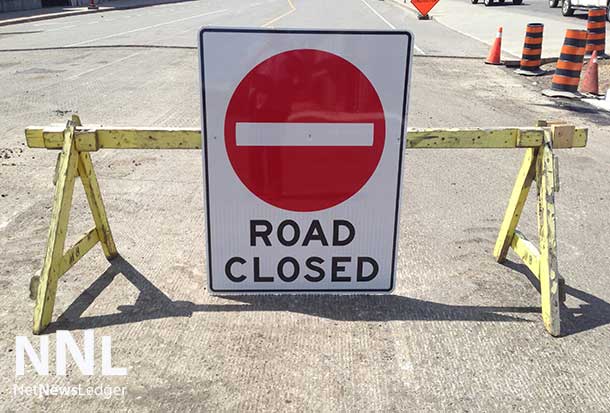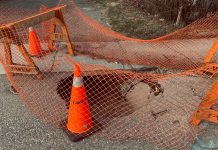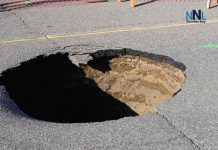DAHL TOWNSHIP, ON – UPDATE
Highway 17 Re-Opened
(DAHL TOWNSHIP, ON) – On July 20, 2018, at 10:33 a.m., members from the Superior East Ontario Provincial Police (OPP) responded to a sink hole on Highway 17 near Obatanga Provincial Park in Dahl Township in between White River and Wawa.
At 1:48 p.m. Highway 17 re-opened in both directions.
Earlier…
On July 20, 2018, at 10:33 a.m., members from the Superior East Ontario Provincial Police (OPP) responded to a sinkhole on Highway 17 near Obatanga Provincial Park in Dahl Township in between White River and Wawa.
Highway 17 is closed and there is no time estimate on when Highway 17 will be reopened.
No detours.
What is a Sinkhole?
SINKHOLES ARE ALL ABOUT WATER.
- Water dissolved minerals in the rock, leaving residue and open spaces within the rock. (This is called “weathering”.)
- Water washes away the soil and residue from the voids in the rock.
- Lowering of groundwater levels can cause a loss of support for the soft material in the rock spaces that can lead to collapse.
- Changing groundwater gradients (due to removing or introducing water to the system) can cause loose material to flush out quicker from the voids and the surface to collapse in response.
- Any change to the hydrologic system (putting more water in or taking it out) causes the system to become at least temporarily unstable and can lead to sinkholes.
- Sinkholes can result from seasonal changes in the groundwater table, freeze and thaw of the ground, and extremes in precipitation (drought vs heavy rain).
Karst landscapes develop naturally through the weathering process so a sinkhole can be considered a natural occurrence. But, human influence causes sinkholes to occur where they might not naturally have happened. Or, they may occur sooner or more abruptly than under natural conditions.
TYPICAL ACTIVITIES THAT CAN LEAD TO SINKHOLES ARE:
- The decline of water levels – drought, groundwater pumping (wells, quarries, mines)
- Disturbance of the soil – digging through soil layers, soil removal, drilling
- Point-source of water – leaking water/sewer pipes, injection of water
- The concentration of water flow – stormwater drains, swales, etc.
- Water impoundments – basins, ponds, dams
- Heavy loads on the surface – structures, equipment
- Vibration – traffic, blasting
Sometimes several factors combine to cause a sinkhole. A sinkhole left open to take more water may continue to grow and can contribute to the appearance of more sinkholes nearby.
Source: Pennsylvania Department of the Environment.






